Pachypodium succulentum
| Botanical Name | Pachypodium succulentum |
|||||||||||
| Family | Apocynaceae - The Oleander or Dogbane family. |
|||||||||||
| Pronunciation | pak-uh-PO-dee-um suk-yoo-LEN-tum |
|||||||||||
| Common Name(s) |
Afrikaans: Dikvoet; Bergkambroo; Bobbejaankambroo; Bobbejaankos; Ystervarkkambroo
|
|||||||||||
| Plant Group |
|
|||||||||||
| Plant Size |
|
|||||||||||
| Position |
|
|||||||||||
| General Information |
|
|||||||||||
| Specific Information | Pachypodium succulentum is an interesting succulent shrublet in that it has a large, turnip-shaped, tuberous stem up to 25 cm in diameter and up to 60 cm in height, most of which is below ground level where it gets protection from frost and the hot rays of the sun.. This swollen stem is known as a caudex and stores water, enabling the plant to survive harsh conditions and long periods of drought. The slender, somewhat twisted branches, 15 - 60 cm long, stand erect or slightly drooping. The upper parts of these stems are interspersed with spines. Leaves are narrow, dark green, scattered along the stems and clustered towards the ends of branches. Pachypodium succulentum and Pachypodium bispinosum are the only two members of this species that are able to survive temperatures to slightly below 0ºC For an informative description of Pachypodiums in South Africa, visit http://www.plantzafrica.com As with many other Caudiciforms, collectors display these plants with a large proportion of the caudex raised above the ground. |
|||||||||||
| Ad Break | ||||||||||||
| Flowers | ||||||||||||
| Description | tubular, opening flat with five narrow club-shaped lobes each with a darker stripe - colour and flower size are variable |
|||||||||||
| Season |
|
|||||||||||
| Colour |
|
|||||||||||
| Growth Rate |
|
|||||||||||
| Plant Uses |
|
|||||||||||
| Distribution and Habitat | in the Western, Eastern and Northern Cape Provinces and western Free State, in arid, stony places and in dry scrub |
|||||||||||
| Planting Suggestions | Pachypodium succulentum adapts well to xeric gardens and warm dry environments and is not suitable for cold and wet situations. Plant in very well-drained soil, water during spring and summer but very little during the dormant period. Although the soil should dry out between waterings, never allow the soil to bake dry (even during the dormant period). Be careful not to damage the brittle roots when transplanting as these plants are prone to rot. If the plant is displayed with the caudex above ground, it will need protection from frost and sunburn. The caudex will grow much faster if it is buried. |
|||||||||||
| Medicinal Uses | The caudex of Pachypodium succulentum is reported to have been used by indigenous people as a source of food and as a yeast for making bread. |
|||||||||||
| Ad Break | ||||||||||||


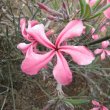
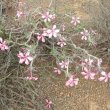
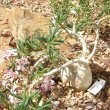
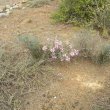
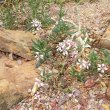
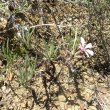



Discuss this plant
Share knowledge, ask a question or give an experience.